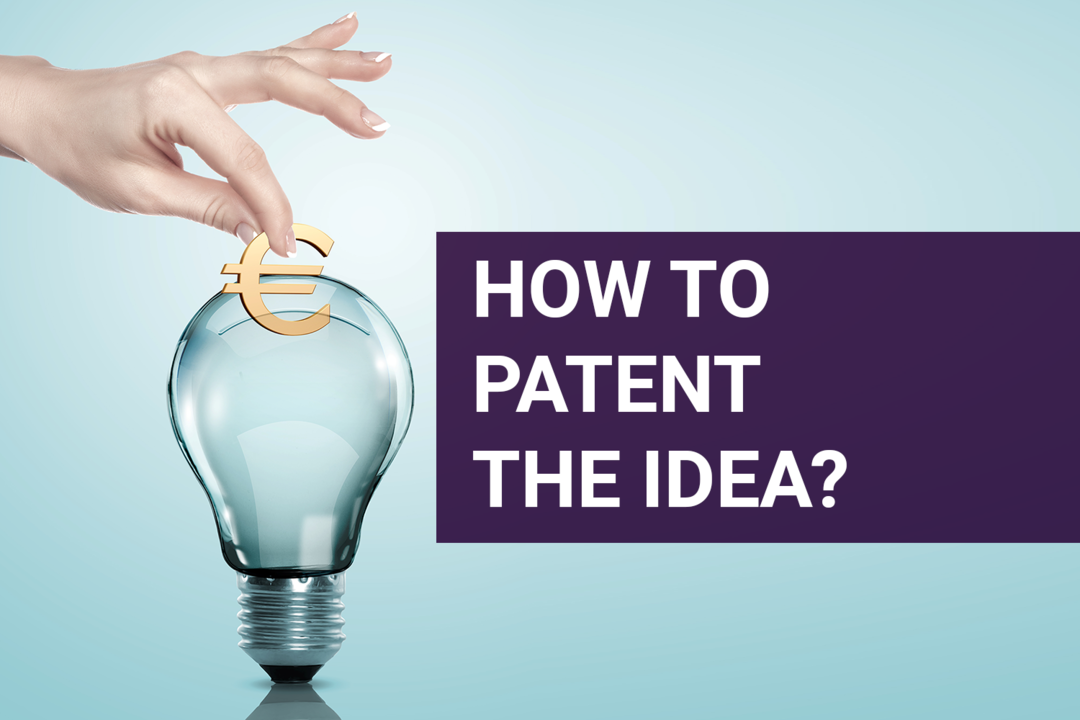How to Patent an Idea?

Table of Contents
Patenting an idea can secure your rights and potentially transform a mere concept into a profitable reality. If you are the one who wants to get a patent, but don’t know how, we are here to help you! Here’s to learning
Why to Patent an Idea?
A patent grants you exclusive rights to your invention, meaning you have legal authority to prevent others from manufacturing, using, selling, or importing your patented invention without your permission. This exclusivity can last up to 20 years, providing a significant timeframe to maximize your market presence and profitability before others can enter the market with similar ideas.
Patents can significantly enhance the attractiveness of your business to potential investors. They are often viewed as a demonstration of the innovative and competitive edge of a company. Investors are more likely to put their money into ventures that show a clear potential for commercial success and market exclusivity, both of which are supported by patents.
Having a patented invention can increase your company’s valuation. This is particularly important if you plan to sell your company or attract more investment. Patents are valuable assets that can boost your company’s overall worth by securing current and future revenue streams.
If you’re not interested in directly manufacturing or marketing your invention, you can license the rights to someone else. This can generate a steady income stream through royalties, which are payments made by the licensee for the continuous use of your invention. Alternatively, you can sell the patent outright for a lump sum, transferring all rights of the invention to the buyer.
Patents contribute to a positive image for your business. They can elevate your reputation as an innovator in your field, enhancing your position in the market. With a patent, you can set your products and services apart from the competition, making your offerings unique and more desirable to consumers.
The protection offered by a patent incentivizes inventors and companies to continue investing in research and development. Knowing that their ideas can be protected legally provides a safety net that encourages ongoing innovation, which is essential for staying competitive in many industries.
Patents can be filed not only in your home country but also in multiple countries, depending on where you want market protection. This global aspect of patents helps secure your invention on an international scale, opening up broader markets and further enhancing potential revenue.
How To Patent An Idea?
Step 1: Verify the Originality of Your Idea
Before you dive into the patent application, ensure your idea is truly original. The essence of a patent is novelty; your idea must be new and not obvious in view of what has been known before.
Conduct a Patent Search
Perform a thorough search in patent databases such as the United States Patent and Trademark Office (USPTO), European Patent Office (EPO), or World Intellectual Property Organization (WIPO). This search will help you determine if your idea or something similar has already been patented, which can save you time and resources.
Step 2: Document Your Invention
Proper documentation is crucial in the patenting process. Record every step of your invention process in a notebook or digital document. Include detailed descriptions, sketches, and any variations you’ve considered. This documentation should be dated and, if possible, signed by a witness. This serves as proof of the conception date of your invention.
Step 3: Determine the Type of Patent You Need
There are three main types of patents:
- Utility patents for new and useful processes, machines, articles of manufacture, or compositions of matter.
- Design patents for new, original, and ornamental designs for an article of manufacture.
- Plant patents for anyone who invents or discovers and asexually reproduces any distinct and new variety of plant.
Decide which category your idea best fits into. Most inventions fall under utility patents.
Step 4: Prepare and File a Provisional Patent Application
If you’re in the early stages of development, consider filing a provisional patent application (PPA). This is an interim step before filing a regular patent application. A PPA allows you to secure a filing date and legally allows you to start using the term “patent pending” on your product or process. The PPA lasts for 12 months, giving you time to refine the invention or seek funding.
Step 5: Prepare Your Formal Patent Application
A formal patent application is more detailed and complex than a provisional one. It typically includes:
- Abstract and background of the invention.
- Detailed description of the invention, illustrating how it is made and used.
- Claims, which define the scope of the patent protection.
You might consider hiring a patent attorney or agent to help prepare your application to ensure it meets all legal requirements.
Step 6: Submit Your Application and Communicate with the USPTO
Once your application is ready, submit it to the appropriate patent office (like the USPTO in the United States). After submission, an examiner will review your application to determine if your invention qualifies for a patent. This process can take several years and may require responding to objections or requests for clarification from the patent office.
Step 7: Pay the Required Fees
There are fees associated with filing a patent application, and additional fees are required after the patent is granted. These can vary depending on the type of patent and the country in which you’re filing. Be prepared to pay maintenance fees to keep your patent active.
Costs of Patents
1. Basic Filing Fees:
- Utility Patent: For large entities, the basic filing fee is $320, but for small entities, it’s $160, and for micro entities, it’s $80.
- Design Patent: The basic filing fee is $220 for large entities, $110 for small entities, and $55 for micro entities.
- Plant Patent: Similarly to design patents, the filing fee is $220 for large entities, $110 for small entities, and $55 for micro entities.
2. Search Fees:
- Utility patents require a search fee of $760 for large entities, $380 for small entities, and $190 for micro entities.
- Design patents have a search fee of $160 for large entities, $80 for small entities, and $40 for micro entities.
- Plant patents are $420 for large entities, $210 for small entities, and $105 for micro entities.
3. Examination Fees:
- For utility patents, this fee is $800 for large entities, $400 for small entities, and $200 for micro entities.
- Design patents have an examination fee of $600 for large entities, $300 for small entities, and $150 for micro entities.
- Plant patents cost $600 for large entities, $300 for small entities, and $150 for micro entities.
4. Issue Fees:
- Once a patent is allowed, the issue fee for a utility patent is $1,200 for large entities, $600 for small entities, and $300 for micro entities.
- For design patents, the issue fee is $700 for large entities, $350 for small entities, and $175 for micro entities.
- Plant patents have an issue fee of $800 for large entities, $400 for small entities, and $200 for micro entities.
5. Maintenance Fees (Utility patents only):
- Paid at 3.5, 7.5, and 11.5 years after the patent is granted, these fees escalate with each period and vary based on entity size. For instance, at 3.5 years, the fee is $1,600 for large entities, $800 for small entities, and $400 for micro entities.
Steps to Take When Your Patent is Infringed
1. Assess the Infringement
First, confirm that the infringement has occurred. This involves comparing the claims in your patent to the product or process you believe is infringing. It’s crucial that the alleged infringer is using or selling a product that falls within the scope of the claims defined in your patent.
2. Send a Cease and Desist Letter
Often, the first step is to send a cease and desist letter to the infringer. This letter informs them of the patent infringement and requests that they stop their infringing activities immediately. It can serve as a formal warning and might resolve the issue without resorting to litigation.
3. Negotiate a Settlement
You may be able to negotiate a licensing agreement with the infringer. This would allow them to continue using the patented invention in exchange for royalty payments. Negotiations can be a cost-effective way to deal with infringement while also providing you with compensation.
4. File a Patent Infringement Lawsuit
If the infringer does not respond to the cease and desist letter or if negotiations fail, you can file a lawsuit in a federal court. Legal action should be considered carefully, as it can be expensive and time-consuming. If successful, you might recover damages and obtain an injunction preventing further infringement.
5. Collect Damages
If the court finds in your favor, you may be awarded damages for the infringement. These can include compensation for lost profits, reasonable royalties, and sometimes even punitive damages if the infringement was willful.
6. Seek an Injunction
Along with damages, the court may issue an injunction to prevent further infringement. An injunction is a court order that will prohibit the infringer from engaging in activities that violate your patent rights.
Legal Advice
It’s advisable to consult with a patent attorney who can provide legal advice tailored to your specific situation. They can help you understand your rights, evaluate the infringement, and determine the best course of action to protect your intellectual property.
Contact Us:
For more information or if you have any questions, please don’t hesitate to contact us. We’re here to help and eager to hear from you!

Sissie Hsiao
Sissie Hsiao is the Vice President of Content Marketing and an innovator at heart. With a deep expertise in law, she specializes in the cutting-edge application of trademark and copyright. Sissie's unique blend of legal knowledge and marketing acumen drives her passion for developing forward-thinking content strategies that protect and promote creative works.




